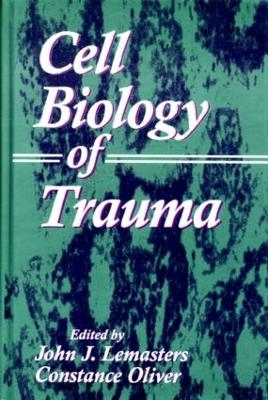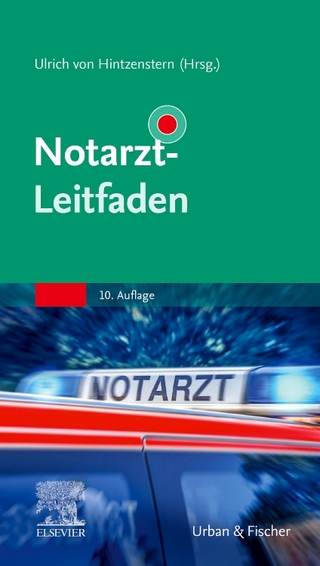
Cell Biology of Trauma
Crc Press Inc (Verlag)
978-0-8493-2453-6 (ISBN)
John J. Lemasters, M.D., Ph.D., is Professor of Cell Biology and Anatomy and Member of the Curriculum in Toxicology at the University of North Carolina at Chapel Hill. Dr. Lemasters graduated in 1969 from Yale University, New Haven, Connecticut, with a B.A. degree in psychology (cum laude with honors) and obtained his M.D. degree and Ph.D. degree in anatomy and cell biology in 1975 from the Johns Hopkins University School of Medicine, Baltimore, Maryland. Dr. Lemasters is a member of the American Association for the Advancement of Science, the American Association for the Study of Liver Diseases, the American Association of Anatomists, the American Heart Association, Council on Circulation, the American Physiological Society, the American Society for Biochemistry and Molecular Biology, the Biophysical Society, the American Society for Cell Biology, the Microscopy Society of America, and the Society of Toxicology. Dr. Lemasters serves on the editorial boards of the American Journal of Physiology: Cell Physiology, Cell Calcium, and Hepatology. He has been the recipient of many research grants from the National Institutes of Health, the National Science Foundation, the American Heart Association, and the Office of Naval Research. Dr. Lemasters is the author of over 200 papers and has previously edited two books. His current major research interests relate to ischemia/reperfusion injury and organ preservation for transplantation surgery. Constance Oliver, Ph.D., is a Program Officer in the Biomedical Science and Technology Program at the Office of Naval Research (ONR), Arlington, Virginia. Prior to joining ONR she was a Research Biologist at the National Institute of Dental Research, the National Institutes of Health, Bethesda, Maryland. She received her B A. degree from Northwestern University, Evanston, Illinois, her M.S. from the University of Utah, Salt Lake City, Utah, and her Ph.D. from the University of Texas at Austin, Austin, Texas. Dr. Oliver has over twenty years of experience in the field of cell biology. Her research has focused on structure-function relationships in the secretory pathway in exocrine acinar cells and in mast cells J She has examined packaging of secretory proteins and formation of secretory granules, membrane trafficking and signal transduction mechanisms in these cells. Currently, Dr. Oliver is managing research programs in Biomedical Science and Technology. She has published extensively and has made numerous presentations at local, national, and international conferences, workshops, and symposia based on her own research. In addition, she has edited several books and conference proceedings and served on the editorial board of The Journal of Histochemistry and Cytochemistry. Dr. Oliver is a member of the American Society for Cell Biology, the Histochemical Society, the Microscopy Society of America, the American Association for the Advancement of Science, the Association for Women in Science, and the Chesapeake Society of Electron Microscopy. In addition, she was elected to membership in Sigma Xi, an honorary academic society, named an Outstanding Young Woman of America, 1977, and received a Gold Medal from Tokyo Dental College, 1984.
MECHANISMS OF LETHAL CELL INJURY -- Chapter 1 -- Models of Toxicity Screening Using Cultured Cells /Roberta L. Grant and Daniel Acosta, Jr. -- Chapter 2 -- Apoptosis: Cellular Signaling and Molecular Mechanisms /Rosemary B. Evans and John A. Cidlowski -- Chapter 3 -- Role of Mitochondrial Injury during Oxidative Injury to Hepatocytes: Evidence of a Mitochondrial Permeability Transition by Laser Scanning Confocal Microscopy /Anna-Liisa Nieminen, Roberto Imberti, Alice K. Saylor, Samuel A. Tesfai, Brian Herman, and John J. Lemasters -- CYTOPROTECTIVE STRATEGIES -- Chapter 4 -- Glycine Cytoprotection and Inhibition of Nonlysosomal Calcium-Dependent Proteolysis during Anoxic Injury of Rat Hepatocytes /J. Christopher Nichols, Rolland C. Dickson, Steven F. Bronk, and Gregory J. Gores -- Chapter 5 -- Di-Calciphor-Dependent Protection against Cell Death due to Mitochondrial Failure /Dean P. Jones -- Chapter 6 -- Role of the Mitochondrial ATPase Inhibitor, IF1? in Cytoprotection during Ischemia in Slow and Fast Heart-Rate Hearts /William Rouslin and Charles W. Broge -- Chapter 7 -- The Discovery and Pharmacology of Tirilazad Mesylate /John M. McCall -- Chapter 8 -- The Role of Neutrophils and Reactive Oxygen Metabolites in Reperfusion Injury /Barbara J. Zimmerman and D. Neil Granger -- Chapter 9 -- The Inflammatory Response after Hepatic Ischemia /Reperfusion /Hartmut Jaeschke -- Chapter 10 -- The pH Paradox in Reperfusion Injury to Heart Cells /John J. Lemasters, John M. Bond, Ian S. Harper, Enrique Chacon, Hisayuki Ohata, Brian Herman, and Wayne E. Cascio -- Chapter 11 -- Pathophysiology of Spinal Cord Injury in a Rat Model of Decompression Sickness /Louis Marzella -- STRESS RESPONSE AND WOUND HEALING Chapter 12 -- The Stress Response and Stress Proteins /Martin E. Feder, Dawn A. Parsell, and Susan L. Lindquist -- Chapter 13 -- Cross Talk between Heat Shock and Oxidative Stress Inducible Genes during Myocardial Adaptation to Ischemia /Dipak K. Das and Nilanjana Maulik -- Chapter 14 -- Alteration in Cell Cycle Control Factors and the Induction of Oxygen-Regulated Proteins by Hypoxic Stress /Harold C. Smith, Robert L. Howell, and John W. Ludlow -- Chapter 15 -- Stress Proteins in Renal Ischemia /Shirley Hilden -- Chapter 16 -- Human Keratinocyte Migration Involves Extracellular Matrix and Soluble Factors /David T. Woodley, John D. Chen, Elizabeth Shim, Janice P. Kim, Jean-Christophe Lapiere, and Christina Peavey -- Chapter 17 -- Endothelial Cell Signaling during Wound Healing /Lewis H. Romer -- PRESERVATION OF CELLS AND ORGANS Chapter 18 -- Development and Optimization of Preservation Solutions /James H. Southard -- Chapter 19 -- Hypoxia, Free Radicals, and Reperfusion Injury Following Cold Storage and Reperfusion of Livers for Transplantation /Ronald G. Thurman, Wenshi Gao, Henry D. Connor, Sigrid Bachmann, Robert T. Currin, Ronald P. Mason, and John J. Lemasters -- Chapter 20 -- Cellular Injury Associated with Organ Cryopreservation: Chemical Toxicity and Cooling Injury /Gregory M. Fahy, Carla da Mouta, Latchezar Tsonev, Bijan S. Khirabadi, Patrick Mehl, and Harold T. Meryman -- Index.
| Erscheint lt. Verlag | 6.3.1995 |
|---|---|
| Zusatzinfo | 22 Tables, black and white |
| Verlagsort | Bosa Roca |
| Sprache | englisch |
| Maße | 152 x 229 mm |
| Gewicht | 793 g |
| Einbandart | gebunden |
| Themenwelt | Medizin / Pharmazie ► Medizinische Fachgebiete ► Notfallmedizin |
| Naturwissenschaften ► Biologie ► Zellbiologie | |
| ISBN-10 | 0-8493-2453-X / 084932453X |
| ISBN-13 | 978-0-8493-2453-6 / 9780849324536 |
| Zustand | Neuware |
| Haben Sie eine Frage zum Produkt? |
aus dem Bereich


